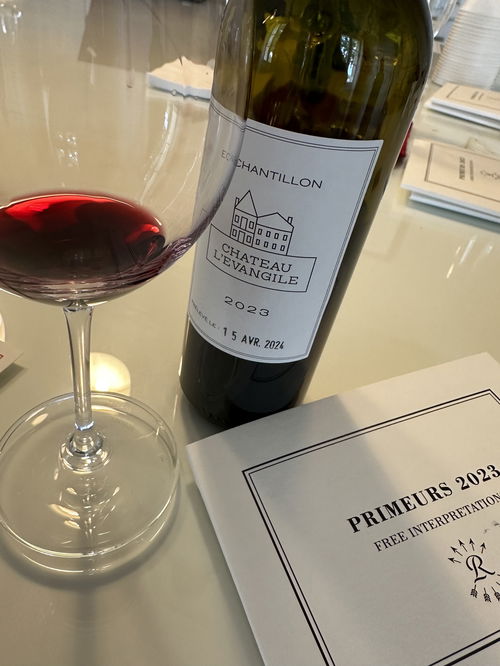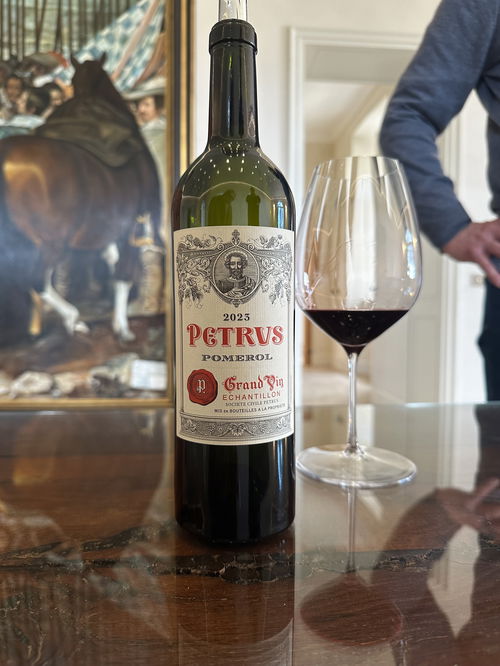Bordeaux En Primeur vintage 2023: The En Primeur system put to the test
Despite enduring allure for Bordeaux's mature vintages, the market faces a stark downturn with gloomy prospects and an unprecedented weakening of the secondary market. Discover how the "En Primeur" system stands up to these challenges.
Once again, around 5000 wine professionals traveled to Bordeaux in person for the presentation of the young wines to get an idea of what the new vintage has to offer. No other region offers such an abundance of top wines. And even if the fascination for the mature food companions from the Gironde seems unbroken, the market environment for Bordeaux has clouded over alarmingly in recent times. The secondary market has recently weakened in an unprecedented manner. Those who have bought "en primeur" in recent years have not been rewarded for their investment in most cases. The system has reached a crossroads.
In bright spring weather, the crowds are surprisingly large, buyers and journalists from all over the world literally besiege the prominent châteaux, and the trading houses can't complain about a lack of visitors either. In view of the actual market situation, this hype seems rather anachronistic, as the rising prices, driven by energy and wage costs as well as the continuing inflationdo not necessarily lead us to expect that this time in Bordeaux will be any different from what we are used to: everything is great, everything is great and therefore more expensive again. No, that's probably not how it's played.
Prices must fall significantly; the 2019 level is the target, i.e. up to 30 percent less than in the previous year. That is where the goal lies, according to the trade. In addition, a great vintage would be the qualitative prerequisite. Initial tastings by Falstaff on site suggest this. The vintage is good, but not great, there are upward and downward outliers, the regions are inhomogeneous - a complex starting point.
Pricing
An analysis by Liv-Ex clearly shows that the trend for fine Bordeaux wines has been clearly negative over the past two years. The "Bordeaux 500 " index - the broadest in the fine wine sector with 500 wines traded - has lost 10.3 percent since February 2022. However, the collectors of top wines were hit even harder. The "Bordeaux 50", which includes all Premiers Crus, was a remarkable 15.3 percent below 2022. Looking at the entire fine wine trade, it is clear that Bordeaux, which five years ago still had a market share of around 60 percent in this segment, now only accounts for around 40 percent. Other regions such as Italy, Burgundy, California and Champagne have made clear gains here. The secondary trade in fine Bordeaux wines, as Liv-Ex shows, was still structured a year ago in such a way that the quantities on offer could also be sold. There is currently three times as much Bordeaux wine in bottles on the market as it can handle. If one compares the prices of young wines with those from years such as 2001, 1996 or 1995, which now offer good drinking maturity, then these are often even lower than the youngest vintages.
Worrying for investors
What the analysis of the five vintages 2021 to 2017 shows is worrying for investors. Only 45 wines of the 500 in the "Bordeaux 500" index have had a result in the green zone since their release. Beychevelle, Calon-Ségur and Carruades de Lafite have recently made a particularly positive impression. The best results brought a five-year average of three wines from the right bankwhich are not listed in the index because they are only available to a very limited extent by subscription: Those lucky ones who can afford Le Pin (+21%), Lafleur (+67%) and Pétrus (+82%) from Pomerol and are allocated them are among the winners in the en primeur purchase. Lafites Carruades performed best among the available wines with 22.9 percent and Beychevelle with 20.3 percent plus.
And the flip side of the coin are those wines that cost a lot less today than they did in the subscription, and the list is unfortunately as long as it is prominent. The negative ranking is led by Neo-Premier Grand Cru Classé A Château Pavie with minus 28 percent, Cos d'Estournel lovers overpaid by 24.2 percent, L'Evangile is at minus 23 percent or Pape-Clément with minus 20.9 percent and L'Angélus with minus 17 percent. Even critics' favorites such as La Mission Haut-Brion (-20.3%) and Haut-Bailly (-17%) have lost ground on the secondary market over the past five years.
A discontinued model?
What proportion of a wine is actually marketed via the en primeur system? Of course, the wineries do not sell the entire vintage by subscription, but for many it is probably much less than one might expect. The situation is clear at Latour, where there is no en primeur sale. It is also known that some other top-quality goods have significantly reduced their EP volumes in favor of a later sales date. These include Mouton-Rothschild and Palmer. There are no official figures, but experts estimate that, depending on quality and quantity, the en primeur volume is only around 15 to 30 percent of the total volume. In the past, the success of an en primeur campaign was measured by the speed and quantity of crates sold. Nowadays, fewer and fewer companies rely on this early business. If the wine comes later, the wineries themselves keep more of the profit, and this may explain some insensitively high en primeur prices. On the other hand, the Bordelais trading houses have overfilled warehouses and, in view of the interest rate level, no great desire to finance goods that are difficult to sell. The less prominent a wine, the more reluctantly it is listed by the Négoce. For this reason, even classified wineries will have to think about their own direct sales structures in the future and implement them very quickly. For those who prefer to buy full-bodied, mature wines, the range will definitely grow in the coming years. The en primeur business seems to be increasingly becoming a discontinued model.
Don't miss out!
Sign up now for our newsletter.





















